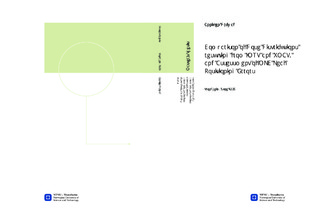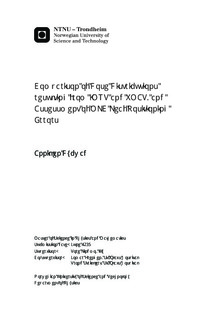| dc.description.abstract | Intensity-modulated radiotherapy (IMRT) is a radiation technique used in the treatment of head-and-neck cancer patients. IMRT results in a dose distribution which conforms to the tumor volume(s), and therefore sparing surrounding normal tissue. However, the radiation delivery is relatively time consuming. Volumetric modulated arc therapy (VMAT) on the other hand, has a radiation delivery time down to one third compared to that of IMRT (depending on number of arcs, arc lengths etc.). This shortened treatment time will allow more treatments per day, and a decrease in discomfort which may be experienced by the patients undergoing radiotherapy. Due to the differences in radiation delivery time, it is of interest to compare the dose distributions resulting from IMRT and VMAT radiation treatment plans.In this study, ten head-and-neck cancer patient cases were used to compare the modalities step-and-shoot IMRT, single-arc VMAT, dual-arc VMAT (two arcs of 356$^\circ$ each) and short dual-arc VMAT (two arcs of 270$^\circ$ each). The Delta4 phantom from ScandiDos was used to measure the resulting dose distributions from each of the 40 radiation treatment plans (4 modalities, 10 patient cases). Each measured dose distribution was then compared with its corresponding calculated phantom dose distribution, which was obtained in Oncentra MasterPlan (treatment planning system) by using artificial CT-images representing the phantom's composition and dimensions.The gamma index was used as the comparison parameter, and the percentage of gamma index values which were $\leq$1 defined the agreement between a measured and calculated dose distribution. The gamma index criteria were set to allow max dose deviation and max spatial deviation of $\pm$3,0$\%$ and $\pm$3,0~mm respectively, and the deviations were normalized to local dose.In order to further compare the radiation modalities, different dose parameters were retrieved from the calculated patient dose distributions resulting from each of the four modalities. The parameters which were assessed were mean dose to parotis, maximum dose to medulla spinalis, homogeneity index for certain treatment volumes (PTVs), and Jaccard index (conformity index) for all treatment volumes combined. The radiation delivery time was also measured for each treatment modality used in this study.In the second part of this study, two systematic MLC leaf positioning errors (MLCpe) were introduced to the treatment plans single-arc VMAT, dual-arc VMAT (two arcs of 356$^\circ$ each) and IMRT of all ten patient cases. The two error-types consisted of 1) a +1~mm shifting of each MLC leaf (opening of aperture), and 2) a -1~mm shifting of each MLC leaf (closing of aperture). The dose distributions resulting from the MLCpe treatment plans, as well as the error-free plans, were measured using the Delta4 phantom. The effects of the errors were evaluated by calculating the relative deviation in mean, minimum and maximum dose within certain chosen volumes.The obtained percentages of gamma index values $\leq$1, show that the accordance between measured and calculated dose distributions was best for the modality IMRT. However, all four treatment modalities had percentages satisfying the pass/fail criteria used at the Department of Radiotherapy (St.\ Olav's Hospital). In terms of the dose parameters which were retrieved from the calculated patient dose distributions, the largest differences between modalities were seen in radiation delivery time and homogeneity index. The three VMAT modalities had markedly shorter radiation delivery times compared to IMRT. The homogeneity indexes, which were calculated for two chosen treatment volumes (PTVs), indicate that the modalities dual-arc and short dual-arc result in best homogeneity for the two volumes, whereas IMRT results in the poorest.The relative deviations in various dose parameters, due to systematic MLC leaf positioning errors (MLCpe), indicate that the VMAT modalities single-arc and dual-arc are generally more affected by systematic MLCpe compared to IMRT. However, for all three evaluated modalities, unwanted clinical effects due to systematic MLCpe may occur for all assessed volumes, due to relatively large deviation percentages. | nb_NO |

